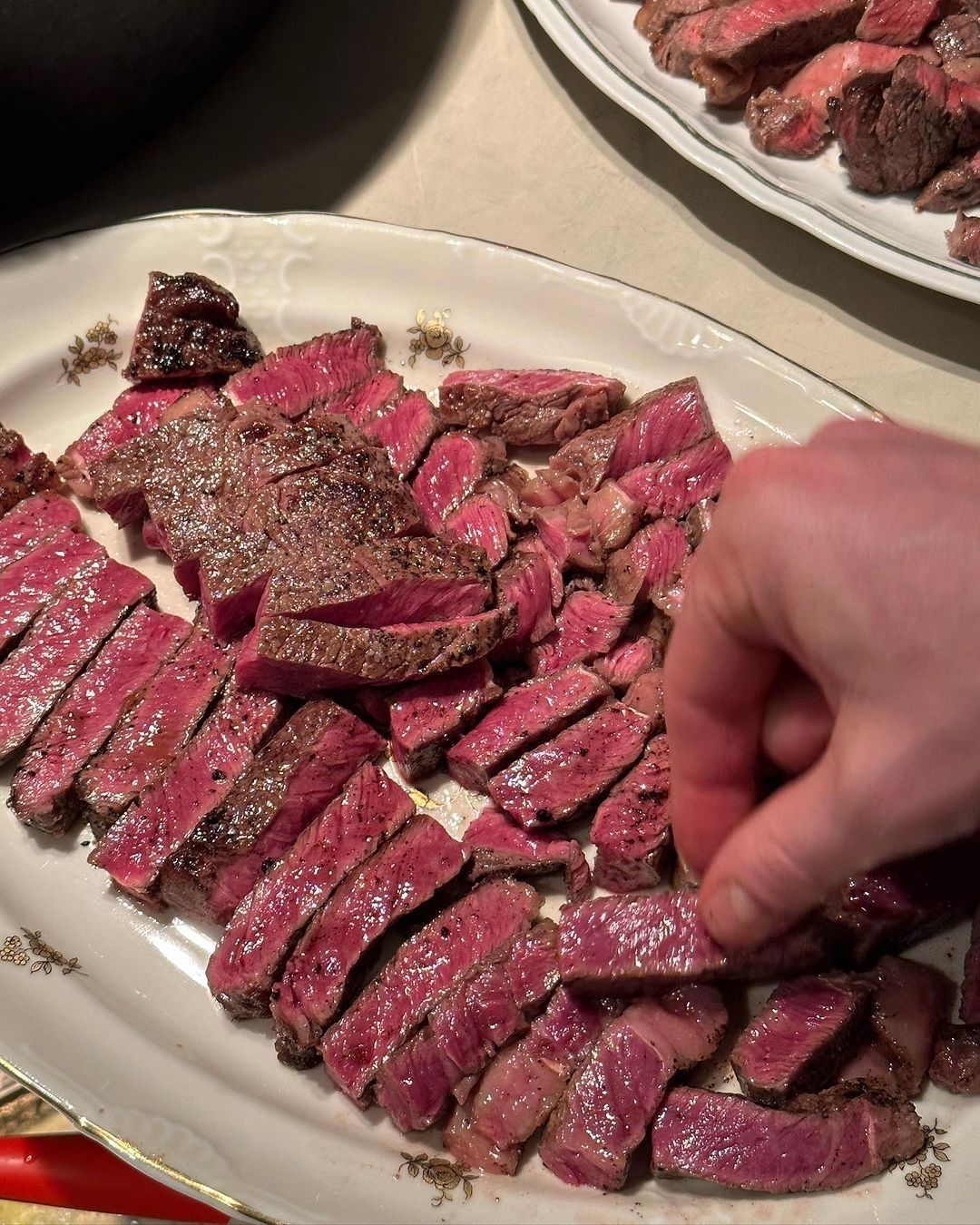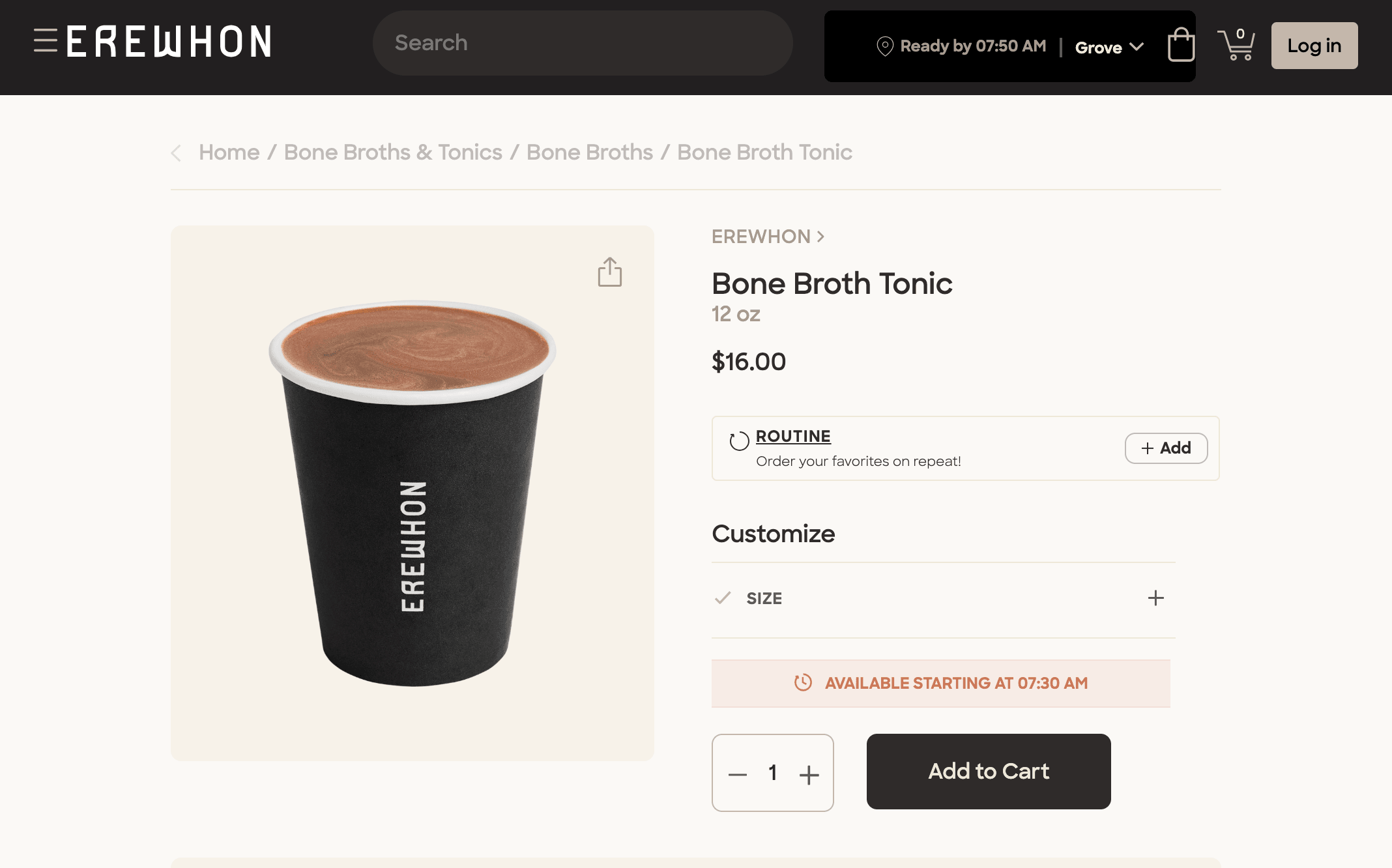POST-VEGAN: How Gen Z Made Meat Cool Again
|Benjamin Schiffer
For a while, being vegan wasn’t merely a dietary choice—it was the cultural high ground. An oat milk latte was a political statement and tofu, a symbol of moral clarity. You were either part of the plant-based future or stuck in a world chewing itself to death.
But something shifted, quietly at first. Somewhere in the back rooms of TikTok, in fringe podcasts and gut health rabbit holes on Reddit, a new aesthetic started taking shape. Less kale, more liver, raw honey, and bone broth in recycled jam jars. Men in their twenties started frying up steaks with the same obsessive energy they once gave to ranking their favorite Frank Ocean tracks or optimizing their skincare routines.

Photo: Daan Walterbos
The mood wasn’t “screw the planet,” it was “stabilize your cortisol.” Protein became currency, and meat, once cast out to the ethical margins, returned as comfort food and content—styled, tracked, spiritually recharged. It’s not just vibes. In 2023, more than 66 percent of Gen Z adults in the U.S. said they follow a high-protein diet. Fewer than a third said they still prioritize low-fat or low-calorie foods. Nearly half ranked protein as the top marker of healthy eating. Even the vegan-curious now read amino acid charts.
Jessie Inchauspé, better known as the “Glucose Goddess”, doesn’t preach steak. Nevertheless, her approach to nutrition—glucose control over calorie counting—has reframed how Gen Z thinks about fat and protein. Her central idea is that blood sugar spikes are behind a lot of modern misery: mood crashes, skin flare-ups, and brain fog. The fix? Lead every meal with fiber, fat, and protein. In practice, that often means eggs, yogurt, and sometimes meat.
To a generation raised on binary food rules—clean vs. dirty, good vs. bad—her advice feels like relief. Filet mignon is seen as functional food, a regulation tool, that has less to do with indulgence than with insulin. And that lands because it feels practical. Gen Z isn’t looking for universal truths. They’re looking for personal systems that work as they apply the language of functional medicine to a Schnitzel.
The message gets more technical in the podcast world, where gut health has gone mainstream. In one episode of Doc’s Diary, Paul Seelhorst, co-founder of the fermented food brand Fairment, lays out a dietary model that challenges plant-based orthodoxy. He argues that many plants contain chemical defense systems—lectins, oxalates—that can irritate the gut or trigger immune reactions. Animal products, especially organ meats, are often easier on the system, more bioavailable, and less inflammatory. The gut, he says, is a control center, and if you’re strategic, meat can help stabilize it.
Of course, there’s still the other side.

Erewhon's Bone Broth Tonic Ingredients: Filtered water, organic beef bones, organic vegetables, organic cider vinegar, herbs and spices, Himalayan pink salt, organic ghee, nutrient-rich botanicals (He Shou Wu, pine pollen, turmeric).
In Germany, the Militante Veganerin—an ultra-strict activist who posts videos confronting meat-eaters on the street—has become a symbol of the old vegan order. Her ethics are consistent, her outrage real. Yet the tone feels brittle. Gen Z isn’t necessarily opposed to her message. They just don’t like being told there’s only one correct way to live.
And that’s the real cultural turn. Gen Z is always negotiating. They move easily between ethics and adaptation. Sustainability isn’t gone—it’s just been personalized. Though livestock still contributes about 14.5 percent of global greenhouse gas emissions, younger consumers in the UK are more likely than any other age group to associate meat-eating with ethical sourcing and long-term health. Labels like “grass-fed,” “regenerative,” and “nose-to-tail” now carry more weight than simple abstinence, and for them, sustainability is less about sacrifice and more about precision.
This shift is also visual. Meat is back in the feed with captions that read like lab reports, though the images are pure aesthetic: steaks sliced on slate slabs, liver eaten raw in golden-hour lighting, jerky arranged beside electrolyte packs and collagen capsules. A kind of body-forward minimalism, where meat fits the mood. It’s not about meat making a comeback, it’s about it being re-coded as precise and softly subversive.
And if you need a Berlin reality check, walk past Borchardt on a Thursday night. There they are—20-somethings in Margiela tabis and Acne Studios loafers ordering Schnitzel. They’re eating like people who just cycled off creatine and want to stay anabolic. The veal is thin. The logic behind it is thick. Style. Strategy. Sovereignty.
To call it a backlash misses the point. Post-veganism isn’t anti-vegetable—it just doesn’t worship the binary. It’s a language of inputs and outcomes filtered through fitness trackers and micronutrient scores. What works for my energy? My skin? My hormones? What makes sense in my feed and on my blood panel?
This isn’t the return of meat as we knew it. It’s just a new kind of balance—one perfectly plated Schnitzel at a time.
Credits
- Text: Benjamin Schiffer
Related Content

Skinny Legend: Ozempic, Body Politics and Unwellness as Aspiration

Hardcore Wellness: Why Anti-Aging Doesn't Exist

Primal Beauty Advanced Technology

Hardcore Wellness: Skincare by a Stem Cell Biologist

The Politics of Beauty: Tyler Mitchell

Harry Nuriev’s Critique of the Industry

Ways of Raving: Geoffrey Mak on Empathy and Psychosis

Art World Resorts: A Remedy for Chronic Anxiety